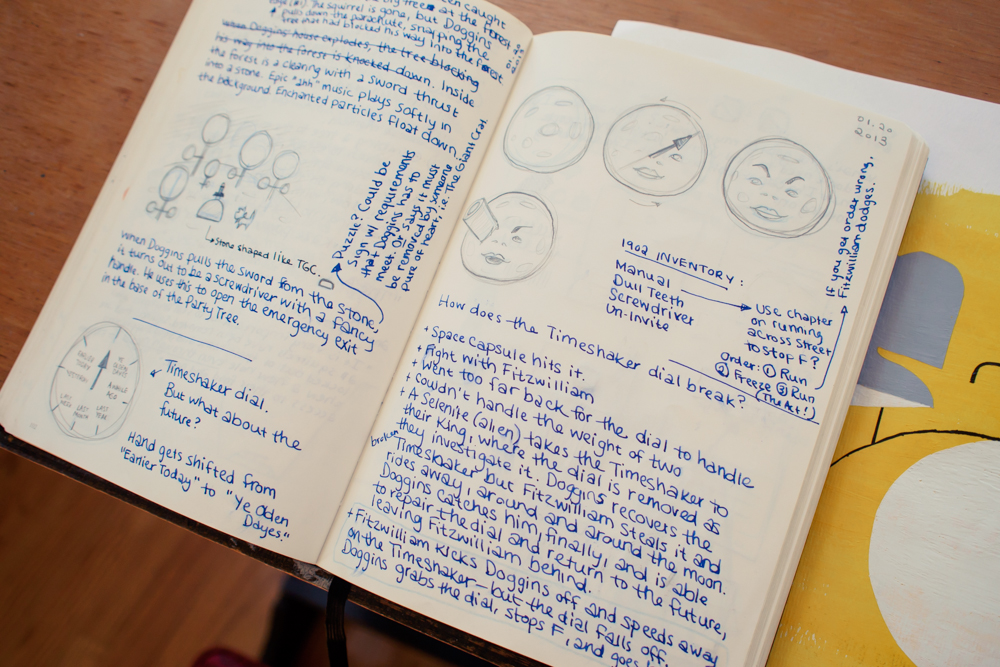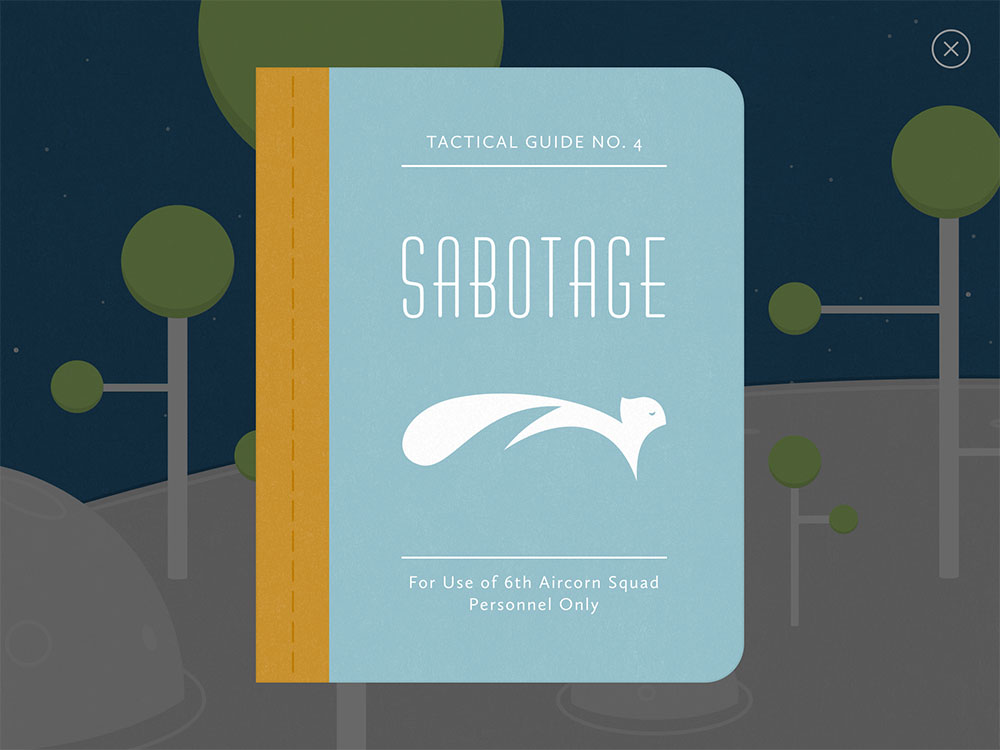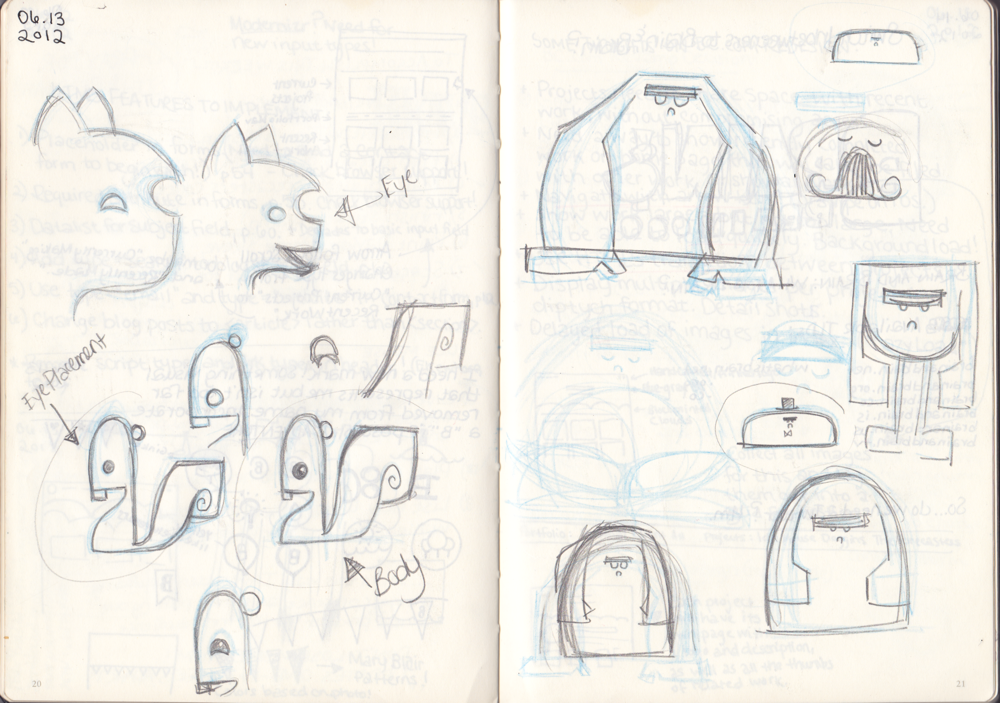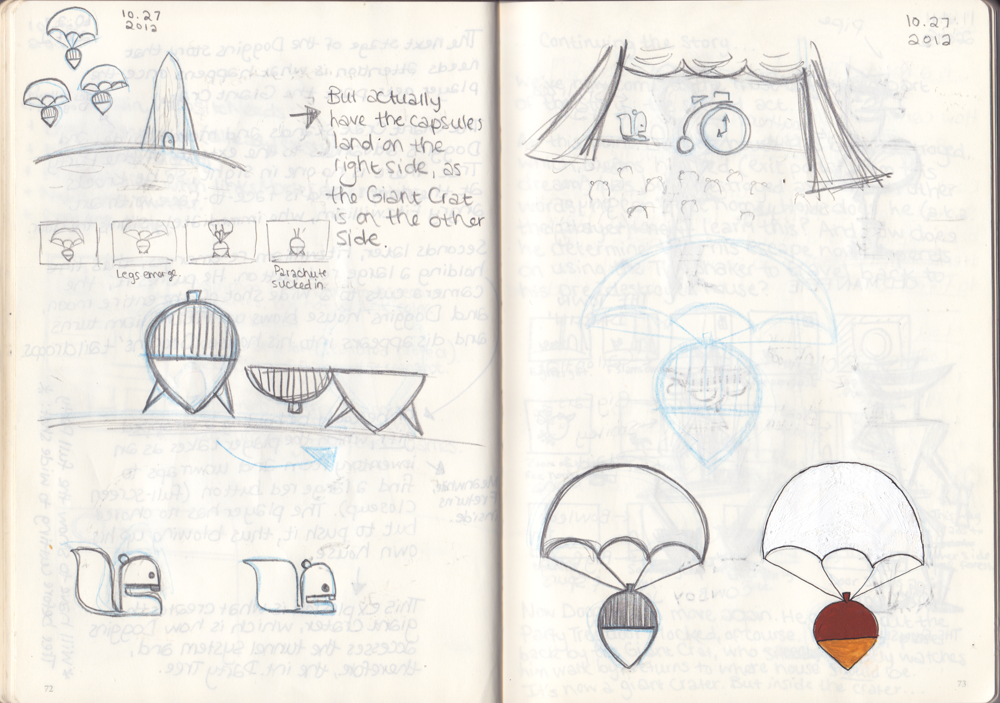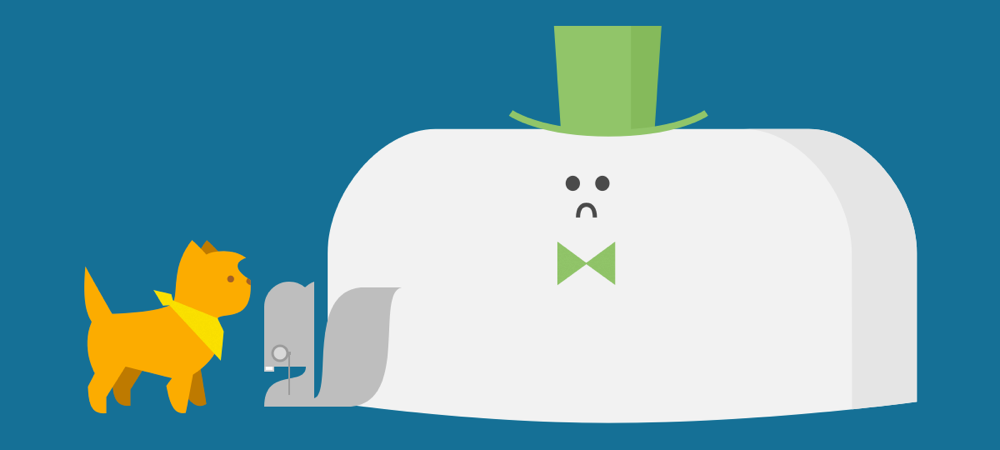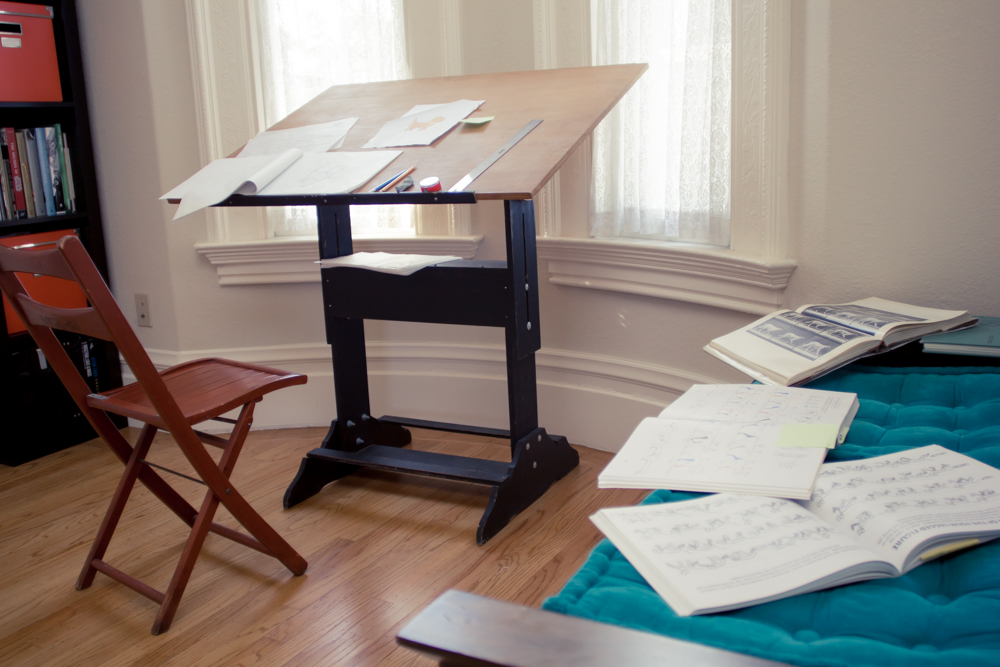Do androids dream of electric sheep? To be honest, I have no clue. I’ll leave that one up to Philip D***. What I have confirmed, however, after watching my canine friend curiously twitching through sleep, is that dogs do indeed dream. Brooke and David Condolora, the husband and wife team behind indie developer Brain&Brain have answered the question, “what do dogs dream about,” with their iOS based game, Doggins.
In Doggins you follow a dreaming terrier exploring and solving puzzles on the moon in a battle of wits with a villainous squirrel, who sports the true sign of bad-guy mischief with his unnerving monocle, as you unravel a plot to reverse the history of human invention.
With the question “what does our adventure-loving dog dream about?” driving the inspiration behind the game, they have not only delivered an aesthetically beautiful game but managed to fetch a PAX East Indie MEGABOOTH selection and a 2014 SXSW Gamer’s Voice Award nomination on their first game development effort. Not bad for a team who simply loved playing adventure games together and wanted to experiment with creating their own.
A discussion with Brooke Condolora from Brain&Brain.
Tell me a bit about you two and your journey to becoming game developers.
Our path was probably a little unconventional, but looking back, it seems inevitable that we’re here. It started conventionally: we both grew up playing and loving games. As kids, I was the weird girl who kept sneaking my Game Boy into school to trade Pokémon, and David built a first-person shooter on his Mac where you wander around an island and shoot PC’s.
We met in college, then took a big leap to California so David could pursue a career in the film industry while I worked as a freelance graphic designer/web developer. We stuck to that for five years but began to realize we wanted more creative freedom in our work. I soon quit client work to focus solely on developing my own projects, and David began writing screenplays in his free time. A few months later, David went to a screening of Indie Game: the Movie at work, walked back to his office, and messaged me: “You and me, we’re going to make a game.” “Okay!” I replied. Sounds trite, but it was as if we’d been scribbling around on rocks and trees and walls, and someone had handed us paper. We both just knew immediately that we’d finally found our medium.
What are some of the biggest things you’ve learned when it comes to working with a spouse on a venture like this?
We’ve had to learn a lot about accepting input and criticism from each other. There’s still no large amount of grace in our disagreements (working on that), but after some grumbling, we always discover a solution that works better than either of our positions. This is usually followed by a high five, when we remember that we really do our best work together.
We also found that working odd hours on a shared project is far less stressful than trying to balance time for individual projects and each other. We had to work a lot of nights and weekends on the game, especially toward the end, and it would’ve otherwise been a lonely time for one of us.
What was the inspiration behind Doggins?
We play a lot of adventure games together, so it seemed fitting to start there. We initially planned it as a quick experiment before starting on a “real” game, so we jumped in with one of the first ideas that came to mind: what our adventure-loving dog dreams about. But we quickly began to enjoy the world and decided to expand the story into a full game.
When I look at the artwork in the game I get a sense that there is a deep grounding in illustration and design. Is that the case?
Yes, definitely. The majority of my experience was in those fields, so it was refreshing to be able to apply that skill set toward creating an entire world. Storytelling really pulled it all together for me. And like anyone working on a longterm project, it was a huge growth experience.
I also loved the chance to take a fresh approach to classic game elements, like inventory icons. At first, I was just going along the path that had been paved before me, but I started to see ways I could improve the experience and aesthetics. The way people interact with devices has changed over the years, so I wanted our game to meet them there.
Are there any particular adventure games that stand out as having had an influence on Doggins, or games you hope to develop in the future?
Classics like Monkey Island and Day of the Tentacle probably had the biggest influence. I’m also a huge fan of Amanita Design’s games, especially Machinarium, which we found to be great models for visual storytelling.
And, though we didn’t actually play Broken Age until Doggins was almost finished, our development process was influenced by Double Fine’s. Since we happened to start (and release) our game just after theirs, and both were adventure games, the timing of their documentary episodes was perfect.
Why the decision to go with a “quiet adventure?”
Originally, “quiet adventurers” was part of the tagline I wrote for Brain&Brain while building the website, but we later realized it was also a perfect description of the game. I guess that’s to be expected, since both are a reflection of ourselves. We never really planned what the game would feel like, and maybe it’s best that it decided for us.
When you two first started developing the game how did the process look? How did it evolve over the life of the development?
We got a slow start, because we had no idea what we were doing or how much work was ahead of us. David started learning Lua, I worked on concept art, and we’d discuss the story together during walks or over brunch. A few months in, when we had worked out a rough story and started prototyping, we made the ridiculous decision to submit to IGF in two months. With that push, we completed an embarrassingly rough build with about five minutes worth of gameplay that, fortunately, didn’t finish uploading before the deadline.
Soon after, we realized we’d need to put in a lot more hours to finish within a reasonable timeline. I dropped freelance work and other projects to work on Doggins full-time, and David started getting up early to squeeze in an hour of programming before work. I’d work on story and puzzles in the morning and art/animation in the afternoon, then hand assets off to David. Eventually, we had to add more nights and weekends, and for the final weeks leading into SXSW, we really only stopped to eat and sleep. It was rough, but we managed to release the game on the day we left for Austin.
With David doing both writing and development, how did he manage that process. It seems to be a difficult one as they tend to require you to jump between two very different ways of thinking and working.
We started out as co-writers, but once he started programming, it was too much for his schedule to do both. I ended up doing the majority of the actual writing, since story and art are so codependent, but we kept it as collaborative as possible. I’d spend mornings working through the story and puzzles, and we’d discuss and finesse at night.
When developing the characters and artwork for the game what was your creative process?
I did a lot of sketching throughout the process, for both characters and artwork. Once I felt good about the direction of the sketches, I’d start building digitally and add color.
Since character design was done so early in the project, I went back to make improvements a few times, even once during the final month. That’s something I wish I’d spent more time on up front, and I think I’ve already done a better job of that in just the first few weeks of pre-production on our next game.
What characters and environment art was the most fun for you and David to create?
We both love The Giant Crat most, whose name never actually appears in the game and is most often called “that snowman thing.” He exists because David made a typo in the original design document that I found funny enough to draw.
Of the rest, I think I most enjoyed creating the squirrel manual. That was the point in the game where everything finally connected, and it started feeling like a solid story with the right amount of humor.
How did you two make final decisions on what would make the game and what would be edited?
We were able to make all our decisions collaboratively, with a healthy amount of arguing. The disagreements led to a better game, so we’re both happy with what’s in there.
And I think we both cared more about the game’s overall quality than our individual contributions, so if something wasn’t working, we didn’t hesitate to cut it. There was a whole scene with a phone booth puzzle that I had completed artwork for, but we agreed that it was a stretch in logic and threw it out.
The color palette plays a big part in the feel and general emotion of the game. How did you arrive at the color selection?
I started with the color of the Doggins character, based on our dog Oliver, who has since become a lot less orange. Because he was bold and bright, I wanted to balance that with quieter colors for the backgrounds. As I started building the rooms, I made the decision to limit the palette to variations of just seven colors, which managed to work for the entire game. Visual restraint became a recurring theme throughout development.
Another impactful element of the game is the animation. Having originally gone to school for animation I fully understand the time commitment that goes in to frame-by-frame animation. Why the choice to go that direction versus interpolation?
I love the craft of traditional, hand-drawn animation, and it felt right for the game. I’ve also never been a fan of the way interpolated animation feels. It is smooth and efficient, but it’s missing the spark that you find in frame-by-frame animation. Sort of like that awful motion smoothing “feature” on modern TVs.
It was definitely a big time commitment, especially for the sequences that started on paper, but I don’t think there was ever a point where I regretted the choice. With that said, I might go a different route next time. We just want to do what fits the game.
Looking back, what’s the single most memorable moment for you and David in the creation and launch of Doggins?
That’s a tough one, but we’re in agreement that the weekend of release day and SXSW was the most memorable point of the whole experience. Everything happened at once: releasing the game, being featured by Apple, positive reviews from the press, watching hundreds of people enjoy the game at SXSW, meeting some really incredible fellow indies, and being up for an award at the same ceremony as Nintendo. Almost too much to process.
I noticed on your blog that you posted an animation test for your next game. Any hints we could pry out of you as to what that is going to be?
It’s too early to say much, but it will be a Scandinavian-inspired adventure at sea. Story driven, but not another point-and-click adventure. I’ll act as lead on this one, which is a different approach than the collaborative way we made Doggins. We each came up with a game concept and will take turns heading those up, beginning with this one.
For the aspiring game developers out there, or those in the thick of their first game, is there any advice you could share?
Get to know other developers! The best way to do this is to participate in meetups and collectives like the Indie MEGABOOTH. We’ve had the opportunity to meet some incredibly talented people along the way, who we can turn to for things like honest feedback, business advice, and hugs.
Also, be willing to work hard, ask questions, and follow no rules.
Starting today, for a short time, Doggins goes on sale in the app store for 50% off making it $1.99. Not bad for engaging your brain and making a “quiet” trip to the moon.
For more on Brain&Brain’s further game development adventures, check out their blog here.


